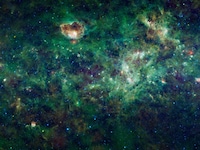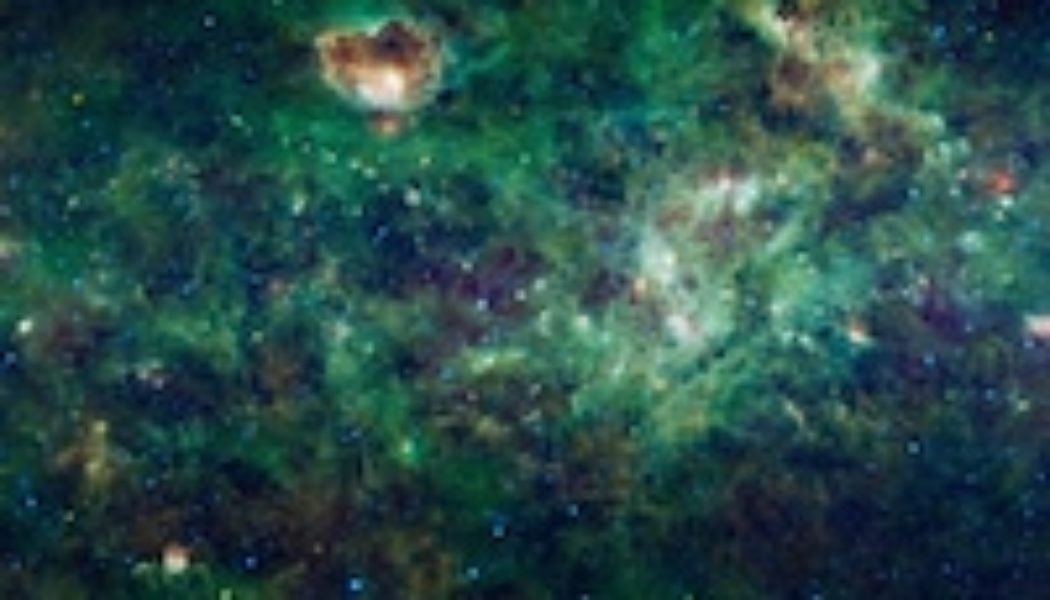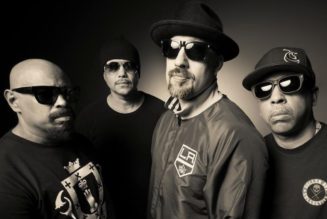
If you want to know what interstellar space is like, it can be a mosh pit. Energetic shocks from our sun and countless other stars blend together, creating a soup of particles and radiation. You can listen to the galactic party — as music.
Since NASA’s Voyager 1 spacecraft became the first humanmade object to cross into interstellar space, researchers have poked and prodded at decades of its data beamed back to Earth from billions of miles away, gaining insight into the mysteries of our universe. Now, a particle physicist and professional flutist have transformed the waveform data of interstellar space — that dense soup of particles — into music fit more for a classical concert.
The new space jam, which premiered Thursday at the South by Southwest EDU conference in Austin, charts the moment Voyager 1 left the bubble around our sun and entered bustling interstellar space.
The melody, played by a solo flute, begins with smooth, connected notes (some using a legato) at a lower register to illustrate the data from inside our solar system. A gradual increase in loudness, or a crescendo, follows to indicate the spacecraft crossing the heliopause, or the boundary that leads into interstellar space. Then the melody becomes very high and changes shape, with more jumps to describe the busy interstellar space environment.
“Understanding that this is connected to what Voyager was measuring, I think, adds another dimension to what people are perceiving,” said Domenico Vicinanza, a music composer and physicist at Anglia Ruskin University, who created the piece. “It is different because the physics is different … something very, very dramatic changed. In this case, it’s the amount of charged particles.”
Each note represents one day of average readings of plasma waves, caused by the oscillation of charged particles in space. Toward the end, the notes become more sparse. The pauses represent the gaps in data as Voyager 1 hit some snags in beaming data back to Earth as it traveled farther and farther away into the cosmos.
The presentation of measurements as sound is known as data sonification, which has become increasingly popular in recent years. Listening to data can help scientists better identify trends and abnormalities in complex data, as our ears can be more sensitive to picking up patterns than our eyes. It can also help researchers more quickly process large quantities of data.
Others, like Vicinanza, use the sounds to create music to better communicate science to the public. He has previously created music from a geyser explosion (using data of Earth’s vibrations) and from signature pools of bubbling mud called mudpots (recorded with a microphone) in Yellowstone National Park.
Raw data used by researchers typically sounds a bit different than the melodic music that Vicinanza created. Voyager 1′s interstellar plasma data sounds like radio static mixed in with periodic whistling — eerie tones that Hollywood would probably utilize as alien noises. The whistling grew louder and higher pitched as Voyager 1 progressed, suggesting the interstellar medium was getting thicker quickly.
“One of the first things that struck me when I listened to these sounds was how much more dramatic the increase in density sounds when you hear it, rather than see it,” Stella Ocker, a NASA guest investigator on the Voyager Interstellar Mission, wrote in an email. “Our ears seem to be very sensitive to those changes in pitch.”
Ocker, who has published on Voyager’s interstellar measurements, said studying the electron density farther away from Earth is important because it can tell how it influences conditions within in our solar system and vice versa. Voyager’s density measurements map “our interstellar backyard,” helping researchers understand what it contains, how far it extends and how it affects our home.
When Ocker listened to Vicinanza’s piece, she said she loved how the composition captured what Voyager 1 experienced on both long and short time scales. It showed the overall increase in electron density as well as lower-level persistent variations. The performance also “really emphasizes that constant sense of motion, that Voyager is ever pressing onwards,” said Ocker, a Ph.D. candidate in astronomy at Cornell University.
The new Voyager piece builds on previous work by Vicinanza and his colleague Genevieve Williams, who turned 40 years of data from Voyager 1′s low-energy charged particle detector into an approximately three-minute orchestra piece.
In that audio piece, the violin plays the melody as Voyager 1 begins its journey. The piano and French horn enter as the spacecraft encounters Jupiter and Saturn. The flute, piccolo and glockenspiel signal it moving into interstellar space.
Turning data into sound has become more popular in the past decade, but such sonification goes back as far as the 17th century. Astronomer Johannes Kepler showed how musical notes can illustrate how planets accelerate and decelerate around the sun in elliptical orbits, rather than circular orbits. He converted the velocity of each planet as it went around the sun to different notes, explained Vicinanza. Higher speeds corresponded to higher pitches; slower velocities with lower pitches.
Vicinanza employs a similar technique in his pieces, at times essentially superimposing waveform data across musical bars as his starting point. His goal is to create the right mapping between data and rhythms that “can tell a story without sacrificing the scientific rigor.”
In some cases, nature’s patterns align with known musical approaches. For example, the new Voyager 1 musical piece actually presented traditional chord patterns common in Western music. The nature of the data consisted of a series of running eighth notes that almost never stop until the very end, which periodically led to a series of arpeggios.
It was outlining a “dominant tonic chord, the most basic chord progression we have in our culture,” said Alyssa Schwartz, an award-winning concert flutist who performed the piece from Voyager 1 data at South by Southwest.
But, sometimes, the data mapping can lead to absurd musical tasks for a human to perform. For instance, the latest Voyager 1 piece has 37 measures, and there is no place to rest or breathe until measure 32.
“I have learned that nature does not care about my need to breathe,” said Schwartz, the director of bands at Fairmont State University. (She had to find moments to surreptitiously take a breath.)
Schwartz said the music has pushed her technical development with challenging cross fingerings and broad, difficult jumps — patterns she hasn’t encountered anywhere else.
“What’s interesting in this kind of music is that the composer that I’m trying to relate is nature,” Schwartz said. “I can’t rely on my knowledge of music theory or music history to try to inform the decision.”









